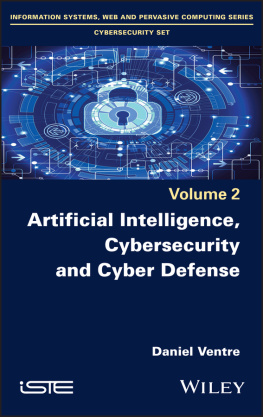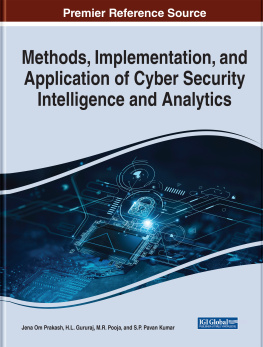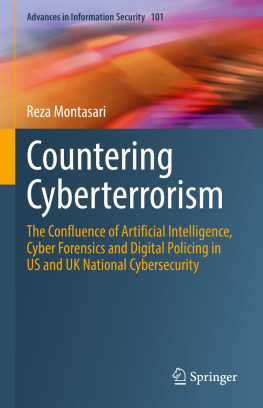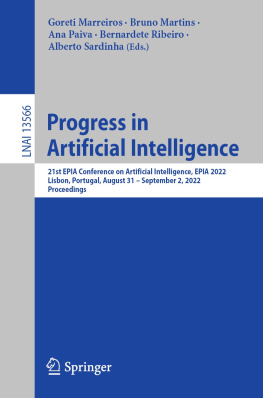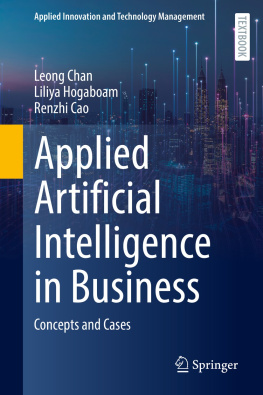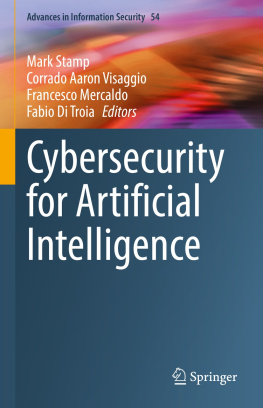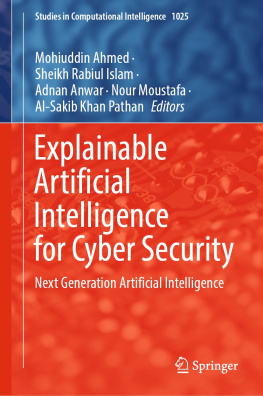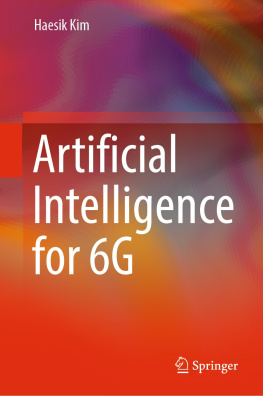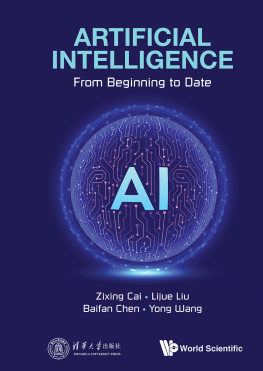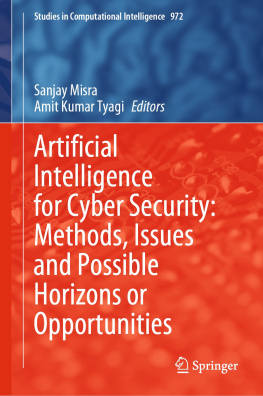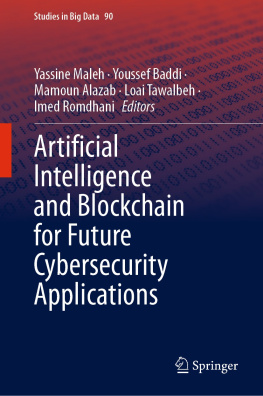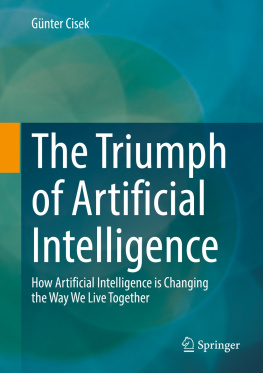
Cybersecurity Set
coordinated by
Daniel Ventre
Artificial Intelligence, Cybersecurity and Cyber Defense
Daniel Ventre

First published 2020 in Great Britain and the United States by ISTE Ltd and John Wiley & Sons, Inc.
Apart from any fair dealing for the purposes of research or private study, or criticism or review, as permitted under the Copyright, Designs and Patents Act 1988, this publication may only be reproduced, stored or transmitted, in any form or by any means, with the prior permission in writing of the publishers, or in the case of reprographic reproduction in accordance with the terms and licenses issued by the CLA. Enquiries concerning reproduction outside these terms should be sent to the publishers at the undermentioned address:
ISTE Ltd
27-37 St Georges Road
London SW19 4EU
UK
www.iste.co.uk
John Wiley & Sons, Inc.
111 River Street
Hoboken, NJ 07030
USA
www.wiley.com
ISTE Ltd 2020
The rights of Daniel Ventre to be identified as the author of this work have been asserted by him in accordance with the Copyright, Designs and Patents Act 1988.
Library of Congress Control Number: 2020940262
British Library Cataloguing-in-Publication Data
A CIP record for this book is available from the British Library
ISBN 978-1-78630-467-4
Introduction
Cyberspace, from the laying of its first building blocks in the 1950s (the first computers, the first software), to what it has become today a vast, extremely dense network made up of billions of computers, electronic chips, data flows, with billions of users increasingly dependent on this technological environment has continued to grow and expand, in a movement of expansion that nothing seems to be able to stop. It has transformed the world, to the point where it has reached the status of a new dimension, alongside the land, the sea, the air and space. Although there was no mention of cyberspace in the mid-20th Century, the foundations had already been laid.
Since then, this expansion has been motivated as much by scientific as by economic and industrial motives, as well as by political issues.
The recent technological markers of this development are, for example, Big Data, cloud computing, 4G, 5G, the Internet of Things, IPv6 and social media. At the political and societal level, the manifestations of this expansion can be seen by access to the Internet, which affects an ever-growing population, by increasingly digital societies (e-administrations, social media, etc.) and by economies that are increasingly dependent on networks, the Internet, computers and communication tools. Some see the effects of this expansion of cyberspace as the democratization of societies, greater freedom of expression and a more dynamic and efficient economy, while others deplore the restriction of freedoms and the strengthening of state control and surveillance capacities, and therefore see this as a cause for the destabilization of societies.
In this landscape, the concept of artificial intelligence (AI) (re)asserted itself around 2015. AI is an element of cyberspace, one of the driving forces behind this broad movement of continuous expansion. But even before thinking about its transformative capabilities will AI have such a profound impact on cyberspace that it will change its nature? it is worth observing how AI fits into cyberspace, alongside all the pre-existing bricks and mortar. Before we think of transformation or even revolution, we must think of contribution and adaptation.
AI is cyber in its own right, because it exists only through software, programming languages, computers, microchips and the data it feeds on and produces. AI is a scientific discipline and a set of techniques that originated at the same time as computers, at the end of World War II, in the United States, before spreading to the rest of the world. The histories of AI, computers, computing and cyberspace will continue to be closely linked.
Paradoxically, however, todays treatment of AI gives the impression that there are two distinct concepts. Articles, books, colloquia, organizations, doctrines and defense strategies, to name but a few, seem to separate AI and cyber, with one exception: when AI is understood as a set of new techniques in the field of cybersecurity. In our view, however, AI should be entirely included in cyberspace, of which it is only one of the bricks. It should therefore be seen as a component that will be part of a pre-existing whole, on which it will have an impact, but whose nature and possibilities will also be constrained by this pre-existing environment:
No doubt you have been deluged with a flood of reports about AI/ES. Almost simultaneously, you have read that it will revolutionize the way you do business [] If you are like most members of senior management whom we have surveyed, you are intrigued by the possibilities of this powerful new tool but are too busy, intimidated, or simply unable to discern the truth. But you should, because the bottom line implications are staggering. [GIL 85]
It was in these terms that Temple University invited managers from the business and administrative sectors to attend one of its conferences dedicated to AI in 1985. Today, AI still raises many questions, the same curiosity, and its transformative power is still highlighted, with the difference, however, that it is no longer a question of limiting the revolution to a few areas. It will affect all areas of human activity.
AI is already present, everywhere around us and in our daily lives, without us being aware of it most of the time. Modern vehicles that are equipped with electronics and computer technology are equipped with AI, where the software analyzes data from thousands of sensors in real time and performs calculations to regulate fuel supply and stabilize the vehicle, as well as many other functions. In autonomous vehicles, information systems take control: AI analyzes the data and decides the actions to be taken to drive the vehicle. Mobile phones, virtual assistants, social networks, anti-spam filters, video games, search engines, medical diagnostic support systems and simulation platforms are some of the applications that have benefited from AI, though it is impossible to draw up an exhaustive list. AI applications multiplied, in particular, during the 1980s, in the form of expert systems, of which industry, as well as defense forces, were major consumers.
The current craze for AI is part of a series of repeated cycles, so there is no guarantee that it will last. However, for the time being, States have been won over, seeing it as a new means of achieving their ambitions: economic and industrial renewal, a new society, governance, AI as an instrument of power and might, and so on.
In this book, we will try to understand how AI has gradually been integrated into defense policies, strategies and doctrines, and, more specifically, into cybersecurity and cyber defense. The integration of AI into the fields of security and defense is the result of a long process which has its roots in the 1950s. Current debates on the use of AI in military affairs necessarily refer to debates on RMA (Revolution in Military Affairs), on changes in the institution of the military, its organization, doctrines and challenges, on changes in power relations, on weapons (arms race, militarization, control), on the law of armed conflict and on the form and nature of conflicts.
This book is structured with chapters dealing with the history of AI (history of research, with which armies are closely associated, in some states), definitions of concepts (in what terms is AI mentioned? How does the military define AI and integrate it into its discourse?), policies (national cybersecurity strategies) and AI in military affairs (military strategies for AI, concepts, doctrines, cybersecurity and cyber defense, the different players). This book is a synthesis of current debates on the role of AI in defense affairs. Since AI is cyber by nature, this book explores one dimension of the militarization of cyberspace. Is this renewed interest in AI the starting point for a reconfiguration of cyberspace, and for a new way of thinking about cybersecurity and cyber defense issues, cyber conflict and its multiple forms and manifestations? Are we moving towards a reconsideration of convictions hitherto held about the specific characteristics of cyberspace, such as its fluidity, the impossibility of establishing borders and the difficulty of marking or defending sovereignty, the impossibility of allocating actions, and the difficulty of controlling information?
Next page
